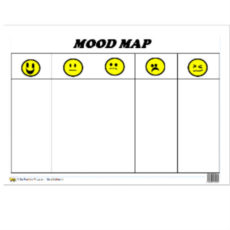-
Sale!
ePoster , Goal setting
Growth Mindset -Teenager +
Growth Mindset is being aware of what we are thinking (our self Talk) and whether it is helping us grow as a person. The way we think effects both ourselves and those around us. Having a Fixed Mindset stops our growth, and can can make us anxious and unhappy. A Growth Mindset helps us to keep on trying in difficult …
-
Sale!
ePoster , Poster
Training to be Happy and Positive
Do these things every day to improve happiness. Being grateful, exercising, relaxing, doing things you love and doing acts of kindness, all make you happier and more focused.
Also available in the Poster Set and as an ePoster.
-
Sale!
ePoster , Poster
Calm and Strong Poses
These poses can help you calm your mind and body. Use them in the classroom, on the play ground, at home, on the beach, whenever you need to calm and centre yourself.
Also available in the Poster Set and as an ePoster.
-
Sale!
ePoster , Poster
Compliments Fill our Bucket
Compliments fill our ‘invisible’ bucket. When we give a compliment we fill our bucket and the other person’s as well.
Also available in the Poster Set and as an ePoster.
-
Sale!
ePoster , Poster
Mood Map
The Mood Map can be used individually or as a class. Children place their name on the chart in the morning and can change it if their mood changes, e.g. after recess or lunch. There needs to be a conversation about why, especially when there are extremes. You will see a trend, so make sure you follow up any time …
-
Sale!
ePoster , Poster
Positive Thought of the Week
Display a new Positive Thought each week that promotes school or business values. In schools, have the students and/or staff devise them.
Also available in the Poster Set and as an ePoster.
-
Sale!
ePoster , Poster
Self Talk Traffic Lights
Self Talk (Growth Mindset), is one of the most important ways of making ourselves feel happy. We all have choices about what we do and say, but sometimes the first things that we think do not help that process. We have to be aware of what we are thinking and turn RED Unhelpful thoughts into more positive GREEN Helpful thoughts …
-
Sale!
ePoster , Poster
Breathe Act Think
This is a strategy to calm down when anxious, stressed, angry, worried or over excited.
Also available in the Poster Set and as an ePoster.
-
Gratitude Journal , Lesson Plans
Gratitude Journal & Setting Goals Journal
Research shows that being grateful daily increases your happiness. This Journal has plenty of space to record things you are grateful for. It includes pages for setting goals and examples of setting little steps to help achieve them. There are also two mandalas to colour and pages to design your own.
Also available in the Packages and as an eBook.
15% discount …
-
Sale!
ePoster , Poster
ePoster Mood Map
The Mood Map keeps track of feelings and emotions and can be used individually or as a class. Children place their name on the chart in the morning and can change it if their mood changes, e.g. after recess or lunch. There needs to be a conversation about why, especially when there are extremes. You will see a trend, so …
happiness
Showing 1–12 of 26 results










